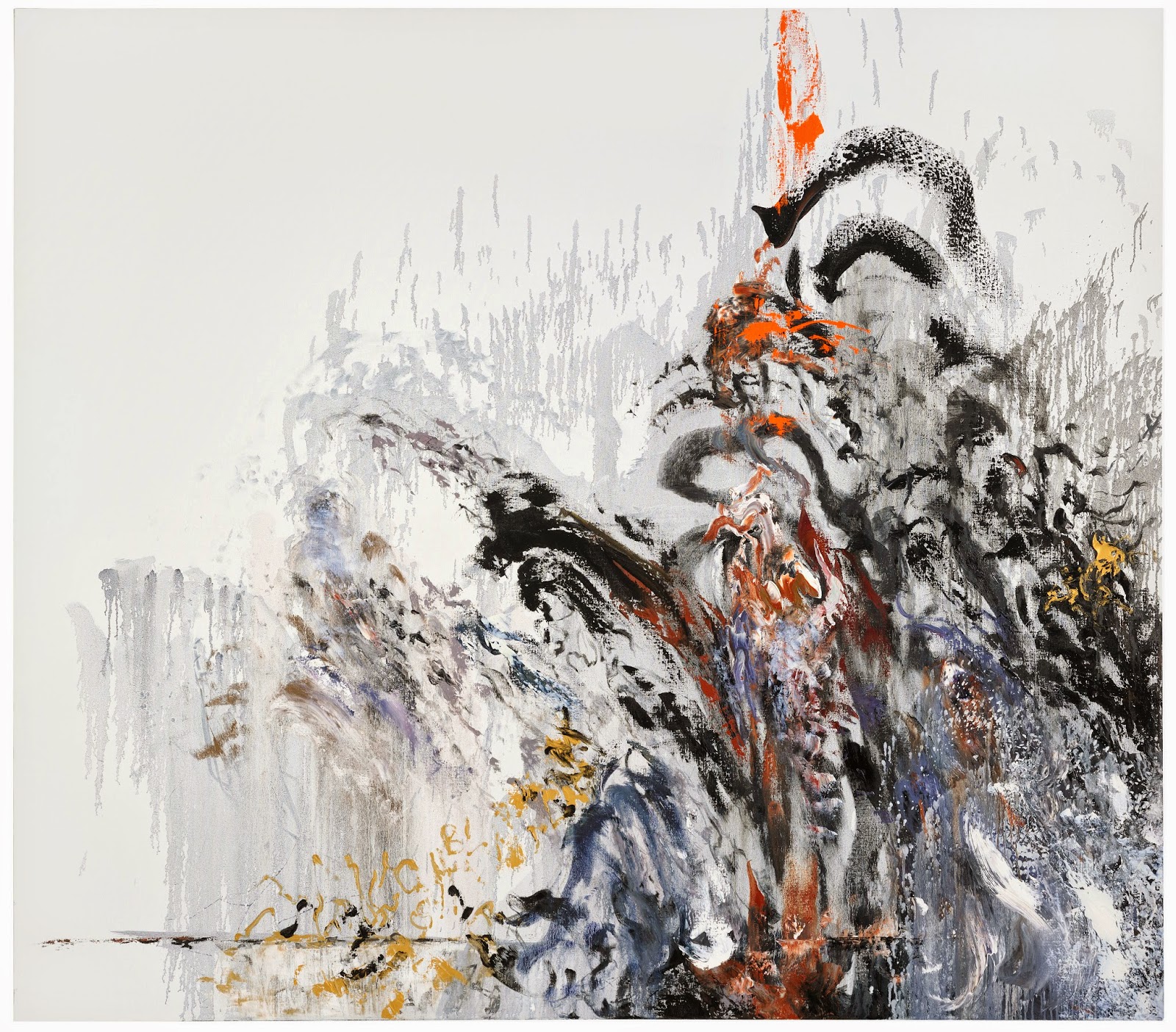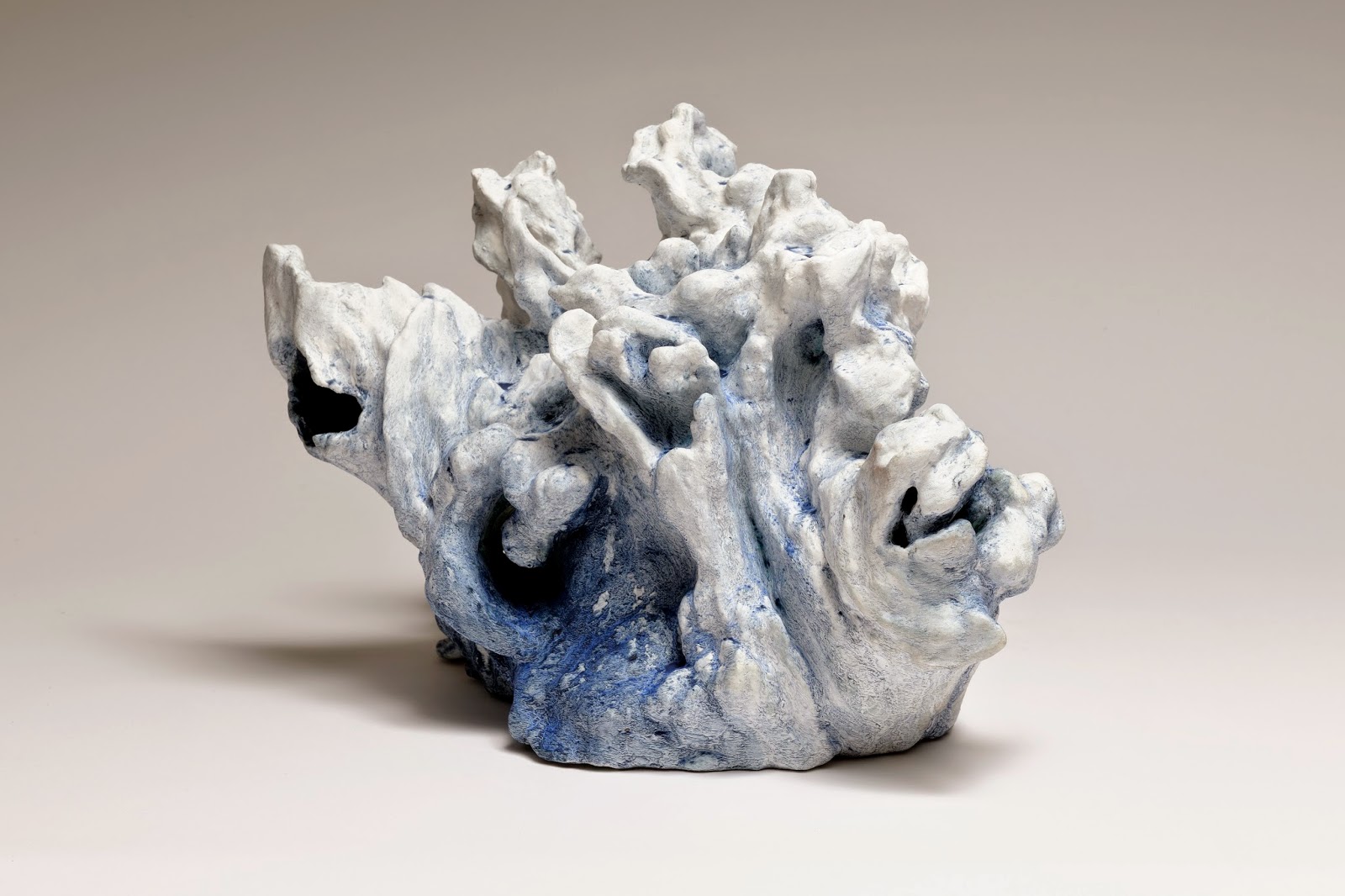05/03/15
Maggi Hambling: War
Requiem & Aftermath
Cultural Institute, King’s
College London
4 March – 31 May 2015
“I can remember hearing Britten’s
War Requiem on a record quite soon after it had its premier in
1960-whatever-it-was and I was pretty stunned by it, by its strangeness and its
grandeur and its pathos,” says Maggi Hambling (born 1945), speaking of the
piece of music which has inspired a whole exhibition, currently on show at the
Cultural Institute, King’s College, London. “It was like first hearing Oscar
Wilde and that voice coming from another place. It was the same sort of
feeling.” Certainly, after sitting through three loops of the extract selected
for Room 2 of this exhibition – an installation called ‘War Requiem II’, since
the original ‘War Requiem’ is now part of the permanent collection of Aldeburgh
Music (on view at Snape Maltings, Suffolk, from 27 March – 3 May) – I
understand what she means. Accompanied by Hambling’s thickly painted,
tumultuous works, hung in a line around the bare wooden walls, interspersed
with mirrors, which bring you into the present, making you somehow complicit in
the atrocity, the effect is overwhelming and brought tears to my eyes. The
burning and resplendent oranges and yellows echo the male voice singing about
“moving, moving into the sun”, capturing both hope and fear. And if you look
closely at the smaller paintings, allow yourself to be absorbed, you can start
to make out molten faces – “victims”, Hambling labels them – all painted from
imagination, yet strikingly real. Once you have seen them, you cannot return to
enjoying the glory of the swirling colours, innocent of their reference. The
sight of them becomes traumatic, the weight of death and loss unbearable.

“The point is,” Hambling continues,
“war seems always to have been and it doesn’t seem to stop. And we all sit
there and watch the news on television and it just goes past us: people being
killed, houses being burnt and all the rest of it. I still have this belief
that oil paint can do something that photography can’t.”
Next door, in Room 1: War, another
oil painting captures an intimate image and renders it eternal – two skulls
cuddling make clear how, when you really love, you love forever, way beyond
“til death do us part”. This all-encompassing aspect of love is further brought
to the fore in Room 4: You are the Sea, where, to accompany a large canvas from
Hambling’s recent Wall of Water series, a sound installation emanates from a
deep well, with the crashing of waves, the roar of the ocean, and the words of
a poem she wrote, describing how one dissolves into love, is washed over by it
and swept away. You – my lover – are the sea.

The rich and tightly curated exhibition
also includes a short video of a bronze called ‘War Coffin’, now held by the
Tate and deemed too fragile to be lent out. Reminiscent of a rocking horse, the
hanging head-shaped pendulums strike one another as the piece tilts and swings,
their clanging echoing the tolling of the death bells in Britten’s requiem,
just audible through the wall. The ghostly movement, apparently without human
intervention, could perhaps be the work of a hand beyond the grave?

And then there is Aftermath. This
is represented by an extensive collection of strange bronze shapes, placed on
plinths, the length of the hallway and in a final, eerily lit, side room. These
disturbing effigies, painted in luminous colours, stand to attention like
soldiers – or fallen soldiers’ graves in a cemetery. They are cast from found
pieces of dead wood, whose gnarled shapes spoke to Hambling and conjured up
associations. They speak, she says, of “a time after war or after death”. There
are animal heads, fleshy slabs of meat, a baby elephant, a drowning polar bear.
They represent things Hambling feels strongly about (such as the melting of the
polar caps), but, she insists, “the titles are only suggestions really. That’s
why I’ve used small, not capital letters. People can see whatever they want to
in them.” Freud would probably have had a field day. They are the building
blocks for dreams – or nightmares – they are, in Hambling’s words, “those
mysterious things that remain.” After experiencing the works in this
exhibition, there are many things, which remain. Its powerful impact, like the
wave of an ocean, has left a resounding aftermath in both my heart and soul.
http://www.kcl.ac.uk/cultural/culturalinstitute/showcase/current/whatson/exhibitions/aftermath.aspx
The
monograph Maggi Hambling: War Requiem & Aftermath, by James Cahill is
available from Unicorn Press, rrp £30.
Images:
Victim XXX
oil on
canvas
2014
12 x 10
inches
© Maggi
Hambling
photograph
by Douglas Atfield
Wall of Water XIII, war
oil on canvas
2012
78 x 89 inches
© Maggi Hambling
photograph by Douglas Atfield
Aftermath (Polar bear drowning)
bronze primed and hand coloured
h24 x w34 x d31cm
© Maggi Hambling
photograph by Douglas Atfield
Also published at: http://www.divamag.co.uk/category/arts-entertainment/art-review-maggi-hambling-war-requiem-aftermath.aspx